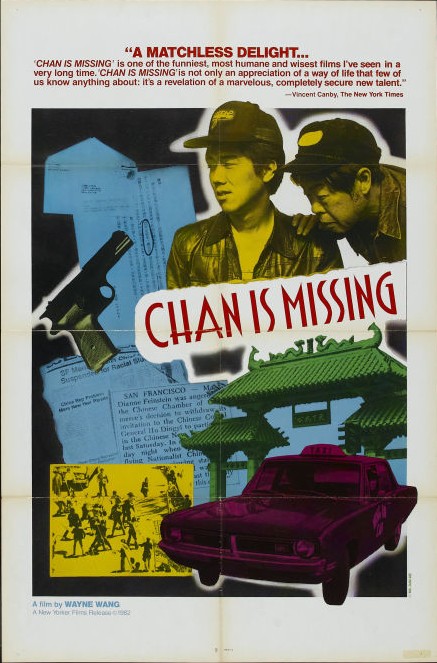 by Colin Marshall
by Colin Marshall
There's this farmer. He has a nice, beautiful farm, but one year there's a big drought. So he's got no money, and the landlord says, “Look, I don't give a shit whether you got money or not money — you're going to have to pay me.” So the farmer says, “I got no money!” The landlord says, “Look, money or no, you're going to pay me, even if you have to send your daughter up to me. The farmer says, “It's okay with me if she wants to go.” Well, the daughter doesn't want to go, so she goes up to the guy and says, “Look, I don't want to come here and you know that.” So the landlord says, “I'm a good guy. I'll give you a chance. You see those two doors over there? One leads outside; one leads right into my bedroom. You make a decision.” Well, he knows damn well both of those doors are going to lead right into his bedroom, and the girl knows that too. The girl says, “That door over there is not the door that leads outside.”
A “Chinese lantern riddle,” the protagonist of Wayne Wang's Chan is Missing calls this curious vignette. He's offered it by way of a solution to the mystery that has obsessed him, and it unsurprisingly fails to tie matters up. When Jo, the film's diminutive, deeply worried hero, relates the tale to Steve, his young nephew and sidekick, explaining that its heroine “was trying to use the negative to emphasize the positive,” Steve simply blows it off. “That stuff's too deep for me!” he laughs.
Jo and Steve are what the film calls “ABCs,” or “American-Born Chinese.” Raised and resident in San Francisco's Chinatown, they work as cabbies, ferrying around the locals and repeatedly explaining the distinction between Mandarin and Cantonese cuisine to tourists. Yearning to become their own bosses, they decide to found an uncle-and-nephew taxi company, but licenses are scarce. Forced into the secondary market, Jo scrapes together his and Steve's savings to sublease one from Chan Hung, an acquaintance of the “FOB,” or “Fresh Off the Boat,” persuasion. But when Jo hands over their money and tries to make contact with Chan to obtain the license, neither the fellow nor the license nor the money are anywhere to be found. Chan is, it seems, missing.
The puzzle sweeps Jo and Steve — but mostly Jo — into perhaps the most unusual noir mystery ever shot, not least because it takes place primarily in the daytime. The duo criss-cross Chinatown, eliciting leads from any community members who might once have come into contact with Chan and following them to whichever sketchy situation they might point. A sociology student hilariously provides her complicated academic interpretation of Chan's failed negotiations with a traffic cop — a result of allegedly incompatible “communication modes” — after running a red. The manager of a Manilatown senior center remembers Chan frequently stopping by, his pockets invariably packed with Hostess snacks, to listen to mariachi music. A political activist and head of a language school frames Chan's dilemma as typical: “He wanted to continue to be Chinese, to think Chinese.” (As opposed to other immigrants, who want to assimilate immediately: “that presents a problem — they're not white.”) His estranged wife, bemoaning that he never even wanted to apply for citizenship, pronounces him “too Chinese.” Chan's sponsor considers him, as Jo puts it, “another dumb Chinaman,” not realizing that he helped invent the first Chinese word-processing system.
Read more »
“Funny how naughty dentists always make that one mistake, isn't it?”
